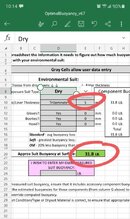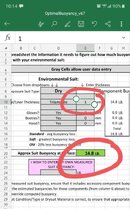RobPNW
Contributor
I received a new drysuit and other equipment and I was able to do equipment and suit checks in the local pool. I figured out an adequate weight and trim in the pool with all my normal equipment, my drysuit, dry gloves and a very basic base layer underneath. I'm hoping someone can give me some advice on extra weight needs when I get in a real world seawater environment.
I would be going from pool water to saltwater and adding a medium loft jumpsuit underneath, and wool dry glove liners and socks. Everything else would be the same. I realize everyone's body is different from the standpoint of weight, buoyancy, trim etc. I don't need a raw weight estimate from ground zero. I already have a baseline in pool water, with all my equipment, and with minimal undergarments. All I need is a rough estimate for what I would need to ADD to my baseline.
I am medium athletic build, 170 pounds and about 5' 8" tall. Any guess how much more weight I more need going to saltwater, and adding a medium loft undergarment jumpsuit, wool socks and wool dry glove liners? I assume when I get in the real world seawater with all this new gear, I will likely have to spend half my first tank, figuring out my raw weight, trim, buoyancy etc. But it would be nice to hear anyone's guess as to how much more weight to bring to the dive site as a starting point.
Thanks in advance for any advice,
Rob
I would be going from pool water to saltwater and adding a medium loft jumpsuit underneath, and wool dry glove liners and socks. Everything else would be the same. I realize everyone's body is different from the standpoint of weight, buoyancy, trim etc. I don't need a raw weight estimate from ground zero. I already have a baseline in pool water, with all my equipment, and with minimal undergarments. All I need is a rough estimate for what I would need to ADD to my baseline.
I am medium athletic build, 170 pounds and about 5' 8" tall. Any guess how much more weight I more need going to saltwater, and adding a medium loft undergarment jumpsuit, wool socks and wool dry glove liners? I assume when I get in the real world seawater with all this new gear, I will likely have to spend half my first tank, figuring out my raw weight, trim, buoyancy etc. But it would be nice to hear anyone's guess as to how much more weight to bring to the dive site as a starting point.
Thanks in advance for any advice,
Rob





